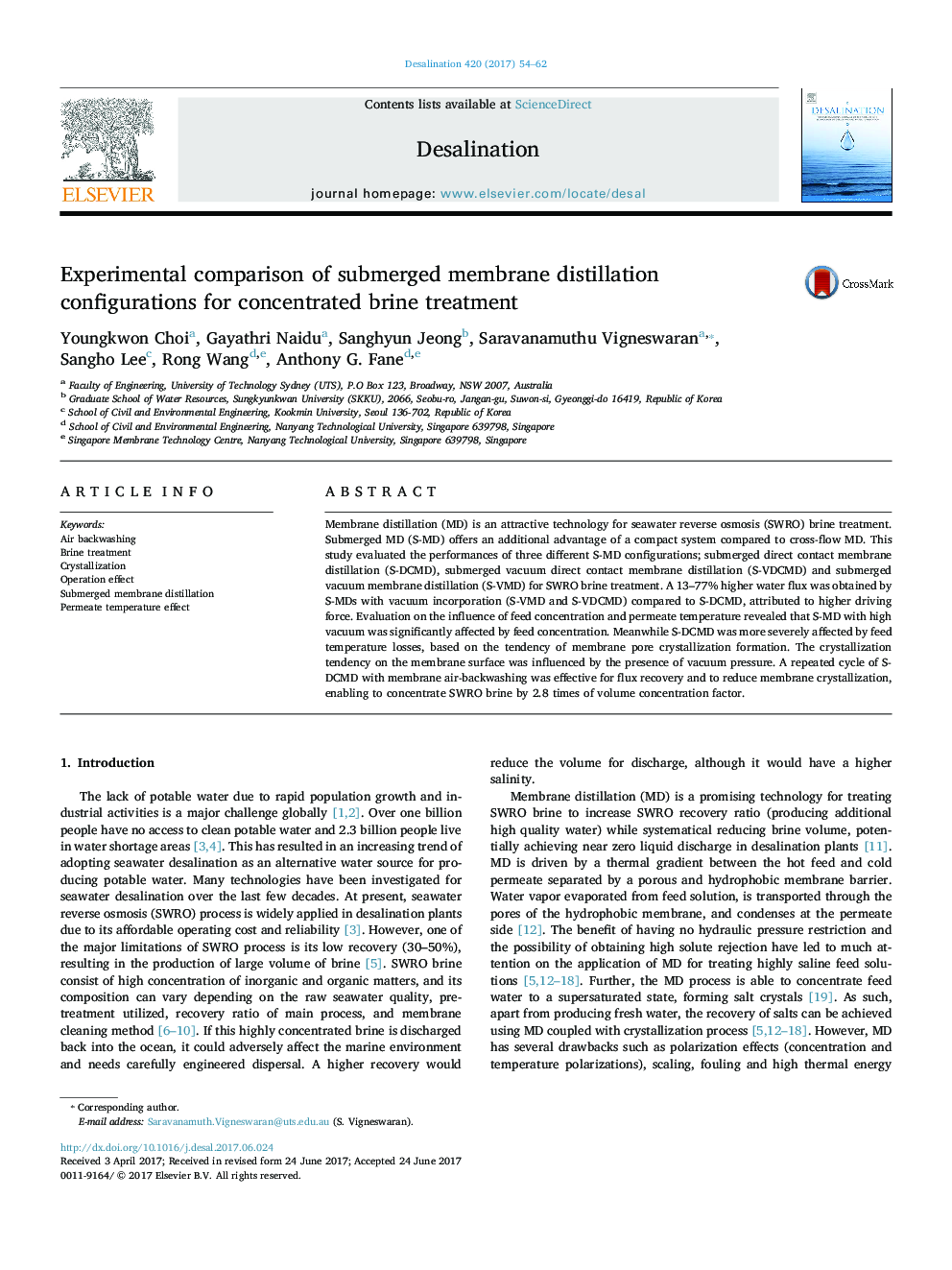| Article ID | Journal | Published Year | Pages | File Type |
|---|---|---|---|---|
| 4987615 | Desalination | 2017 | 9 Pages |
Abstract
Membrane distillation (MD) is an attractive technology for seawater reverse osmosis (SWRO) brine treatment. Submerged MD (S-MD) offers an additional advantage of a compact system compared to cross-flow MD. This study evaluated the performances of three different S-MD configurations; submerged direct contact membrane distillation (S-DCMD), submerged vacuum direct contact membrane distillation (S-VDCMD) and submerged vacuum membrane distillation (S-VMD) for SWRO brine treatment. A 13-77% higher water flux was obtained by S-MDs with vacuum incorporation (S-VMD and S-VDCMD) compared to S-DCMD, attributed to higher driving force. Evaluation on the influence of feed concentration and permeate temperature revealed that S-MD with high vacuum was significantly affected by feed concentration. Meanwhile S-DCMD was more severely affected by feed temperature losses, based on the tendency of membrane pore crystallization formation. The crystallization tendency on the membrane surface was influenced by the presence of vacuum pressure. A repeated cycle of S-DCMD with membrane air-backwashing was effective for flux recovery and to reduce membrane crystallization, enabling to concentrate SWRO brine by 2.8 times of volume concentration factor.
Keywords
Related Topics
Physical Sciences and Engineering
Chemical Engineering
Filtration and Separation
Authors
Youngkwon Choi, Gayathri Naidu, Sanghyun Jeong, Saravanamuthu Vigneswaran, Sangho Lee, Rong Wang, Anthony G. Fane,
